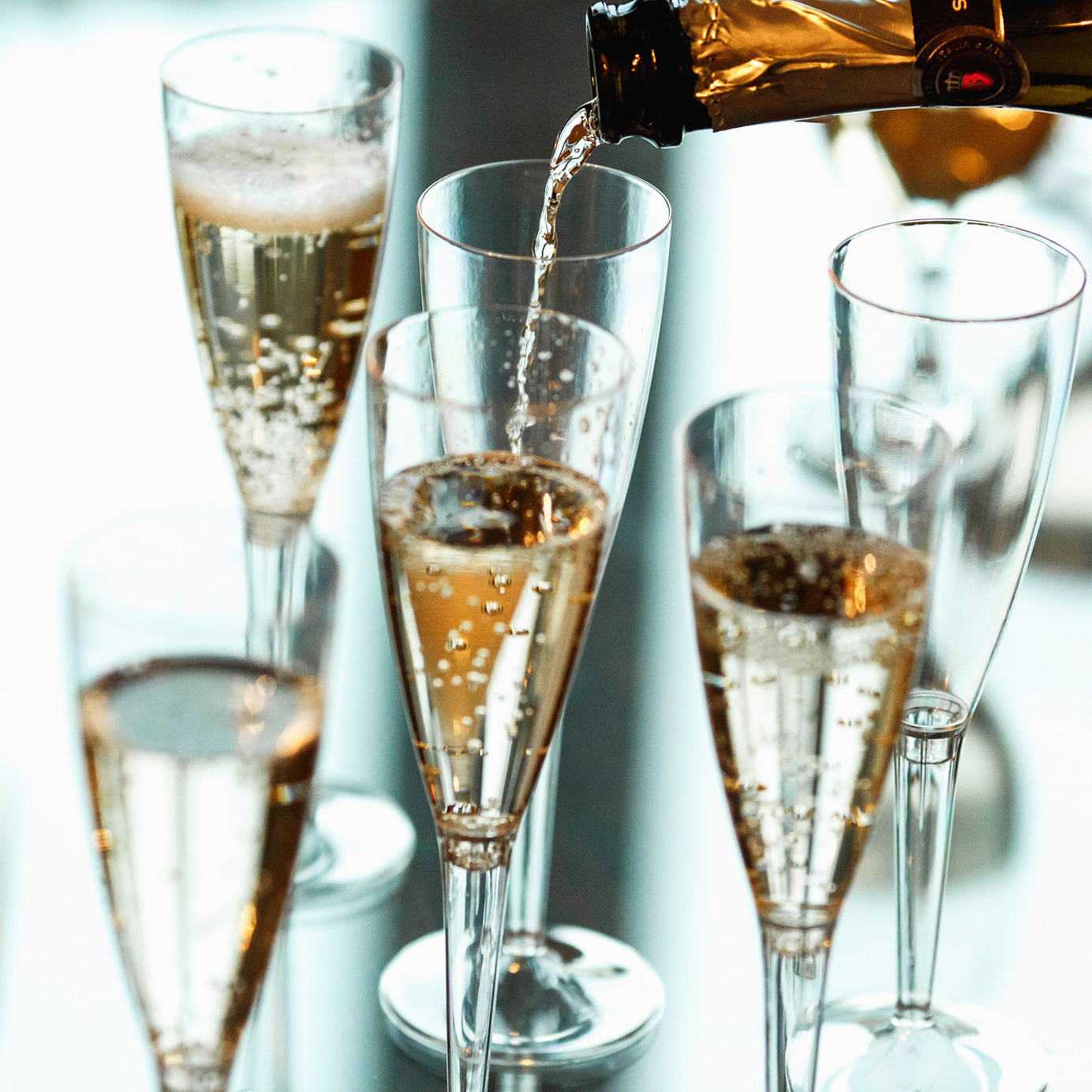Champagne and Prosecco and Cava, oh my! It’s the bubbliest time of the year, meaning that most of us will be meeting our sparkling wine quota in the next month or so. (Or, if you’re sparkling wine freaks like us, you’re just gearing up for yet another bubble-filled year.) But how does sparkling wine actually become sparkling? There are a few different options, and each one can create a remarkably different style of beverage.
The key differentiator is secondary fermentation. By adding a mixture of yeast, sugar, and wine called the liqueur de tirage in a closed environment, still wines become effervescent. When the secondary fermentation begins, the carbon dioxide released by the yeast has nowhere to go but into the wine, making it bubbly. What distinguishes the finished product is where this secondary fermentation takes place and how long the wine is aged with the dead yeast cells, called lees.
Ready to drop some knowledge on fellow holiday party guests when trays of bubbly are passed out this season? Here are the six ways to make sparkling wine.
Champagne Method, a.k.a. Traditional Method
The Champagne method, which must legally be called the traditional method outside the Champagne region, is the classic sparkling vinification process. It is generally believed to make the highest-quality, longest-lived, most complex sparkling wines in the world. It is also generally the most expensive, labor-intensive, and time-consuming.
The traditional method requires a secondary fermentation to take place inside the bottle in which the wine will be sold, which is temporarily capped after the liqueur de tirage is added to the base wine. When the yeasts have finished working, they die and become lees. The lees remain in contact with the sparkling wine until removed by the winemaker, creating texture, richness, and complexity in a wine. This is why certain regions have a minimum lees-aging requirement for their wines.
Before corking the final bottling, winemakers will remove the lees sediment by a process called riddling. They invert the bottle until the sediment sits in its upside-down neck and can be frozen. When the temporary cap is removed, the bottle’s pressure forces the sediment out, at which point a mixture of sugar and wine called dosage is added, along with a final cork.
Even though there are cheaper and easier ways to make bubbly, winemakers invest in the traditional method because it produces such high-quality sparkling wines. Outside Champagne, top traditional method wines include Cava, Franciacorta, and Crémant.
Charmat Method, a.k.a. Tank Method
Named for its inventor, the Charmat Method is a less expensive way of sparkling wine. It’s also called the tank method, which alludes to the secondary fermentation location. Rather than separating and fermenting each bottle individually, the liqueur de tirage is added to a pressurized tank of still wine, which undergoes secondary fermentation en masse. When the yeasts die, or when the winemaker decides to stop fermentation by cooling the tank, the wine is filtered and bottled without extended lees contact. Rather than emphasizing richness and complexity, the tank method enhances clean fruit and aromatics, making wines that are youthful and easy-drinking. The most famous Charmat method sparklers come from Prosecco.
Transfer Method
The transfer method is a hybrid of the traditional and tank methods, borrowing pieces from each. These sparkling wines begin just like traditional-method sparklers, with secondary fermentation taking place inside a bottle. Then, the wines are emptied into a pressurized tank, their sediment filtered off, and packaged into new bottles. This allows a sparkling wine to gain the benefits of lees-aging without the expense or time of riddling and disgorgement. The transfer method is commonly used for unusual sizes of bubbly that would otherwise be made in the traditional method.
Continuous Method
Not commonly used outside of bulk German sekt production, the continuous method was created in Russia and is similar to the tank method, though slightly more complicated. The liqueur de tirage is continuously added to base wine that is pumped through a series of pressurized tanks, some of which contain oak shavings or chips. Lees accumulate on these wood shavings, enhancing toasty, yeasty flavors while also helping clarify the finished sparkling wine.
Ancestral Method
The oldest sparkling winemaking method of all, the fittingly named ancestral method has recently regained popularity among the wine trade as the method used to create pétillant-naturel, or pét-nat. Secondary fermentation does not occur for the ancestral method; rather, a fermenting wine is transferred from tank to bottle before the first fermentation is complete, where it finishes fermenting under cork or, more commonly, cap. Some disgorge and rebottle ancestral-method sparkling wines after fermentation is complete, but many today elect not to, resulting in a cloudy, earthy, textured wine.
Carbonation
As its name suggests, this method involves carbonating a still wine using an injection of carbon dioxide, like soda. Lest you think that it might be a clever idea to pop a bottle of still wine into a SodaStream, know that carbonation is generally considered to be an inferior method of making sparkling wine, as the bubbles will dissipate quickly.
